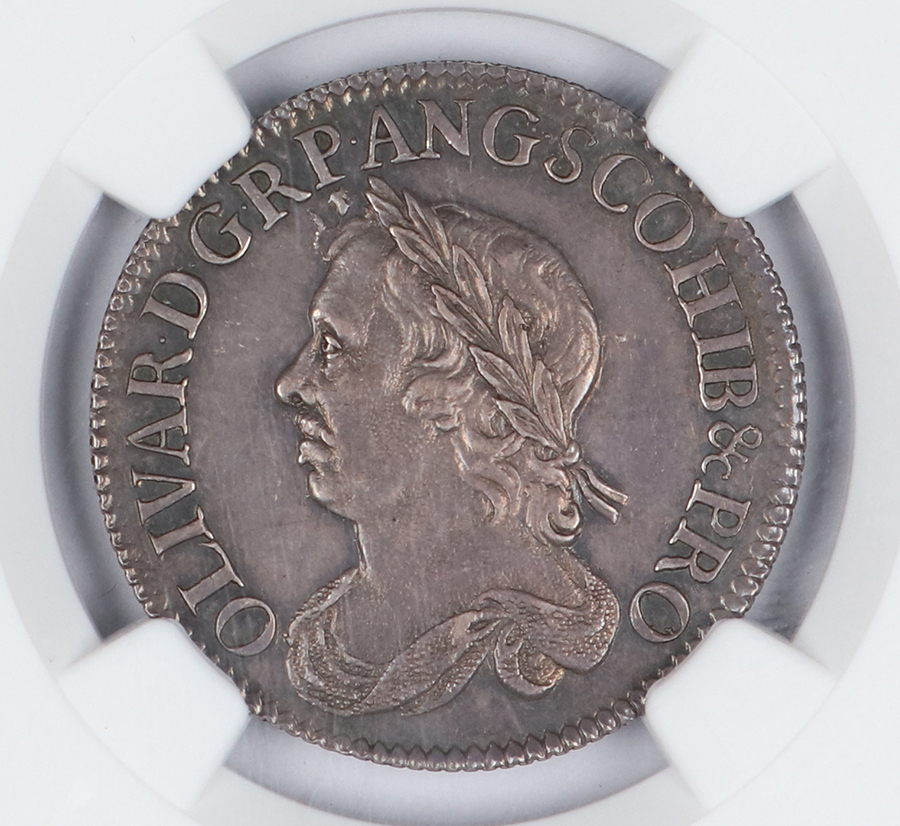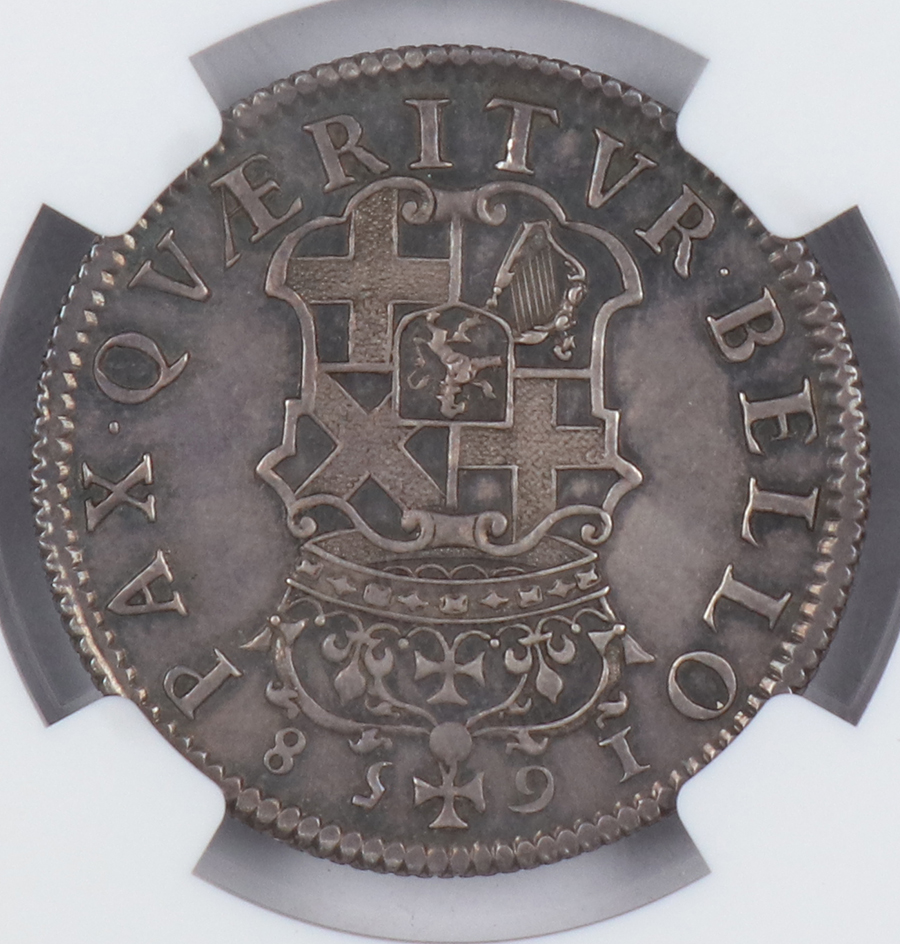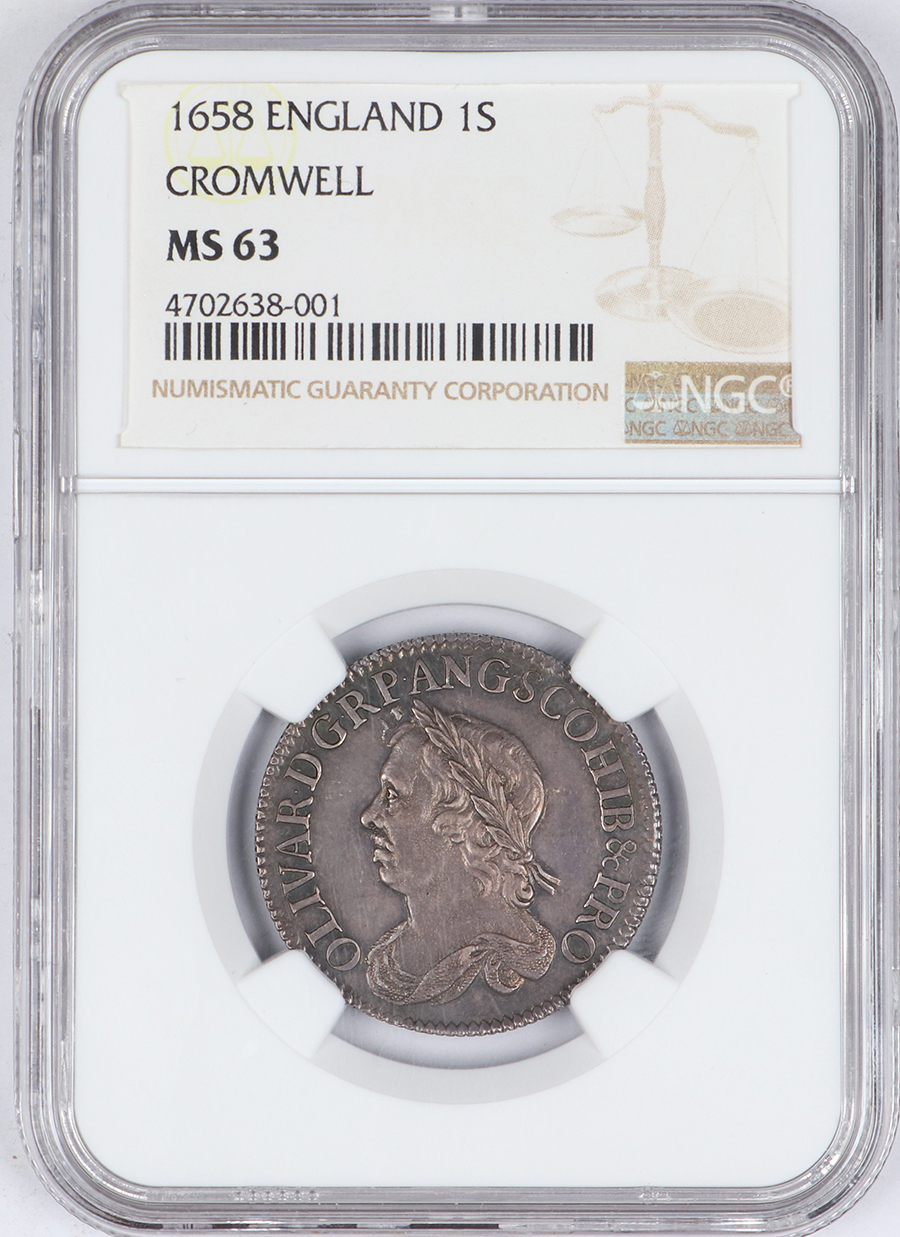- Home
- World Coins
- Certified World Coins
- Great Britain: Oliver Cromwell Shilling 1658 MS63 NGC
Great Britain: Oliver Cromwell Shilling 1658 MS63 NGC
Great Britain: England
Oliver Cromwell Shilling 1658
NGC MS63
S-3228, ESC-1005
This piece of history retains subtle reflectivity in the fields, with light cobalt and russet toning under a slate gray patina. A very scarce piece of history in a highly desirable mint state condition. As many pieces were destroyed or defaced following the restoration of the monarchy, this vestige of the commonwealth period of England is an important piece in any British or esoteric collection.
The portrait of Cromwell is well struck and prominent on the planchet, with the inscription in abbreviated Latin: "Oliver by the Grace of God, Protector of the Republic of England, Scotland and Ireland," and on the reverse "Peace is sought by war."
After signing the execution warrant for Charles I, Cromwell was the protector of the Republic until his death in 1658. After re-establishment of the crown, the royalists dug up his body and posthumously beheaded it and displayed his head as a warning to anyone opposed to the royal lineage.
The historic significance of this piece is seldom matched.
Oliver Cromwell Shilling 1658
NGC MS63
S-3228, ESC-1005
This piece of history retains subtle reflectivity in the fields, with light cobalt and russet toning under a slate gray patina. A very scarce piece of history in a highly desirable mint state condition. As many pieces were destroyed or defaced following the restoration of the monarchy, this vestige of the commonwealth period of England is an important piece in any British or esoteric collection.
The portrait of Cromwell is well struck and prominent on the planchet, with the inscription in abbreviated Latin: "Oliver by the Grace of God, Protector of the Republic of England, Scotland and Ireland," and on the reverse "Peace is sought by war."
After signing the execution warrant for Charles I, Cromwell was the protector of the Republic until his death in 1658. After re-establishment of the crown, the royalists dug up his body and posthumously beheaded it and displayed his head as a warning to anyone opposed to the royal lineage.
The historic significance of this piece is seldom matched.






